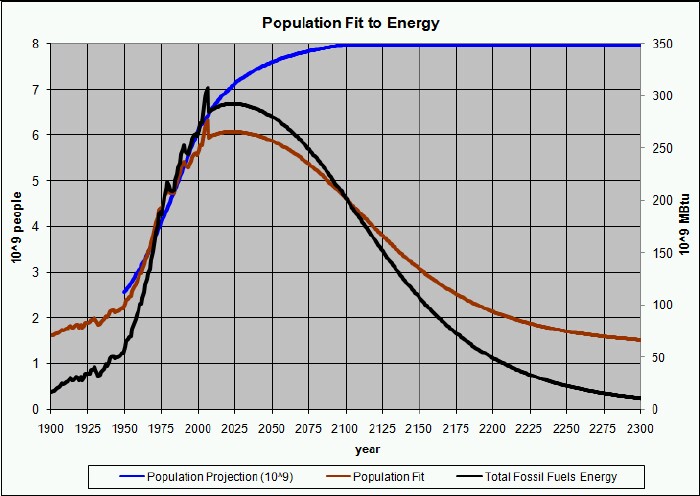
L. David Roper
http://www.roperld.com/personal/RoperLDavid.htm
2 July, 2016
| Copper | |||
| Antimony | |||
One can make a good argument that there are two kinds of minerals depletions:
The typical minerals book or web page states something like this: "Note that we will not likely ever run out of a useful substance, since we can always find deposits of any substance that have lower concentrations than are currently economical. If the supply of currently economical deposits is reduced, the price will increase and the concentration factor will increase." (http://www.tulane.edu/~sanelson/geol111/matenergy.htm) What is not recognized is that "price" is basically a euphemism for energy. The problem is that the energy that has allowed huge amounts of minerals extraction is fossil-fuels energy. And fossil-fuels also deplete.
The first kind of depletion can be roughly calculated using the calculations I have done for the depletion of fossil fuels. That is the purpose of this article. It will be assumed that many minerals will show depletion proportional to the amount of available fossil-fuels energy.
In all equations below E = available fossil-fuels energy in megaBTU (MBTU).
When fossil fuels deplete, it is very likely that people will also deplete.
An approach for population decline or collapse is to assume that world population is proportional to the amount of fossil-fuel energy that is available. I did such a calculation which is shown in the following graph:

The blue curve is a population projection assuming approach to an asymptote of 8x109 people. The brown curve is a population projection in which the population between 1950 and 2006 is fitted to the fossil-fuels energy available (unit 109 MBtu). The fit equation is
Population(109) = 1.350+0.01616*E.
It is seen that the population declines rapidly and approaches an asymptote of about 1.35x109 people.
Click here to see some graphs showing the amount of various available minerals per capita, assuming that population decline and minerals depletion are all proportional to available fossil-fuels energy.
Antimony is used in a wide variety of materials.
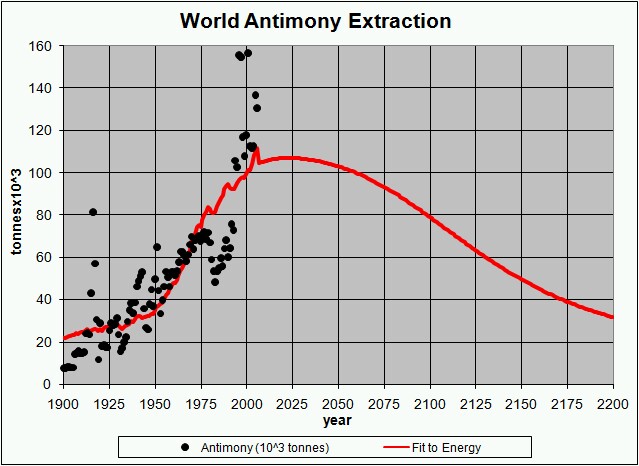
Bauxite(106 tonnes) = 16.72 + 0.3084 E. Total Extracted = 30,824 x 103 tonnes.
| 16.72487 | 0.308412 |
Bauxite is an important ore that contains aluminum.
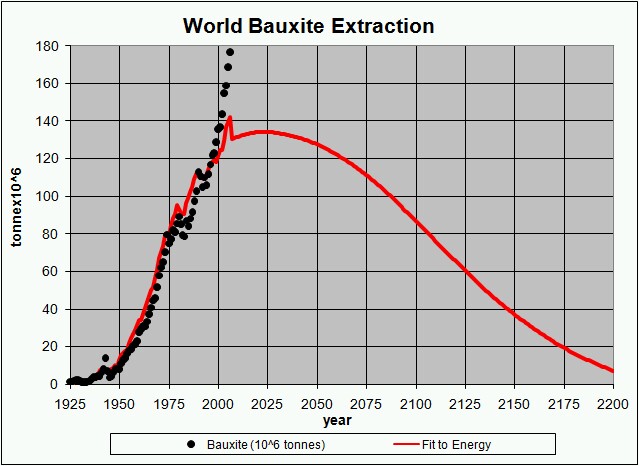
Bauxite(106 tonnes) = -18.53 + 0.5220 E. Total Extracted = 12,417 x 106 tonnes.
Cadmium is used in batteries, paints and plastics.
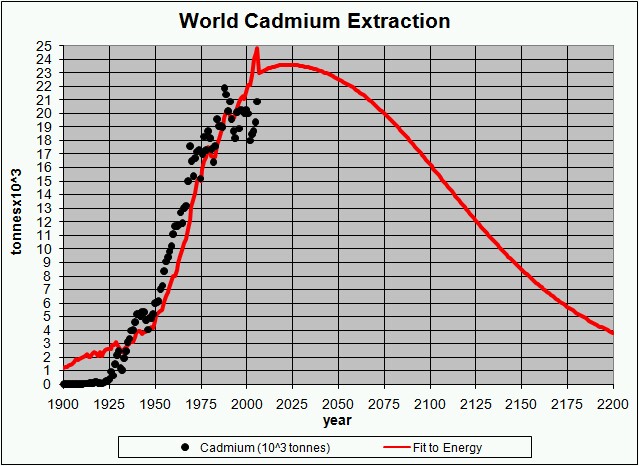
Cadmium(103 tonnes) = -0.2285 + 0.08154 E. Total Extracted = 4,172 x 103 tonnes.
Chromium is used in making stainless steel.
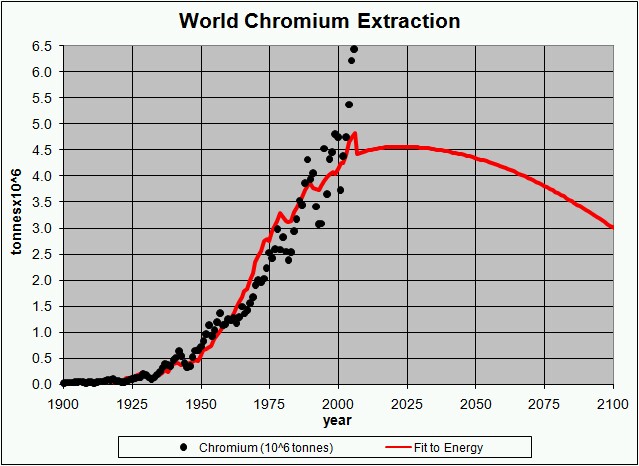
Chromium(106 tonnes) = -0.4604 + 0.01714 E. Total Extracted = 703 x 106 tonnes.
Cobalt is used to make high-strength alloys and for radioactive isotopes.
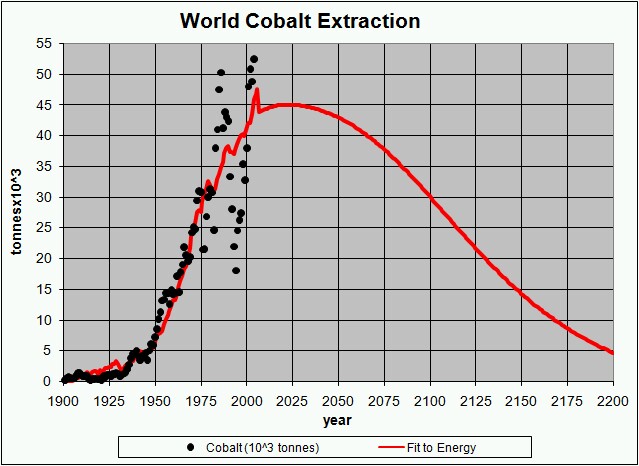
Cobalt(103 tonnes) = -3.437 + 0.1656 E. Total Extracted = 7,133 x 103 tonnes.
Copper is an important metal of especially great use in electical conductors.
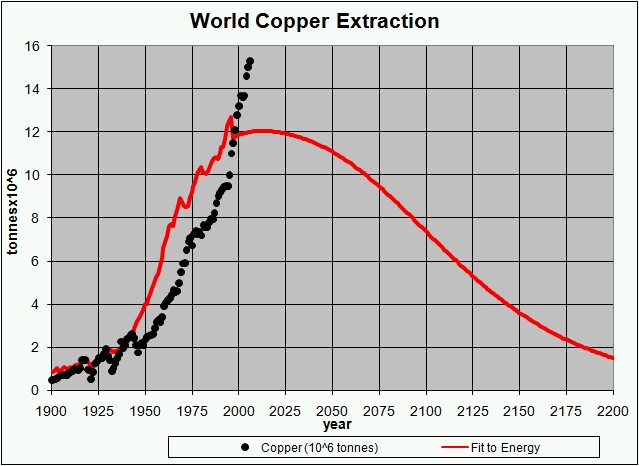
Copper(106 tonnes) = -0.2528 + 0.0421 E. Total Extracted = 1,992 x 106 tonnes.
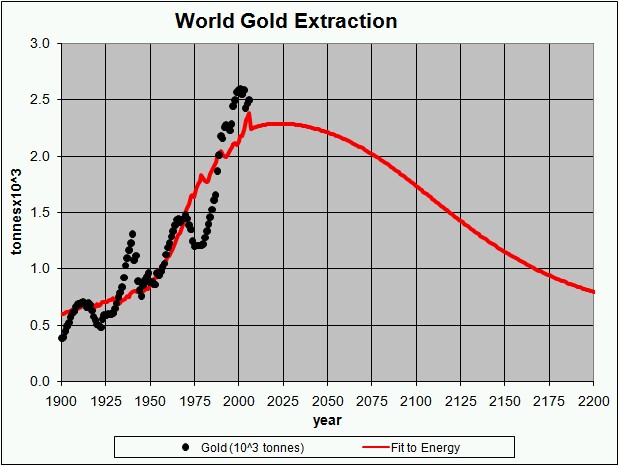
Gold(103 tonnes) = 0.4935 + 0.006136 E. Total Extracted = 766 x 103 tonnes.
Helium is used to cool superconducting magnets.
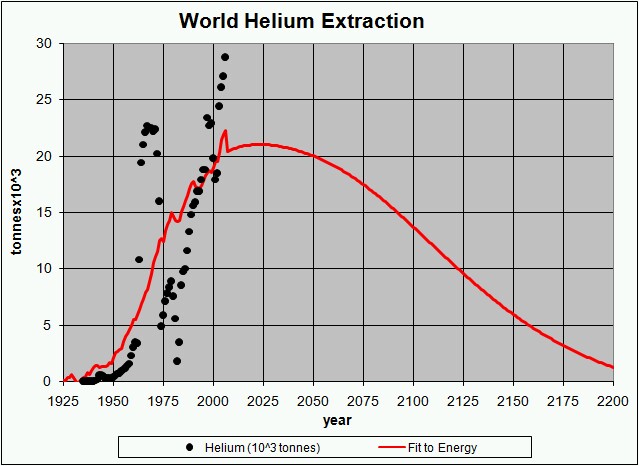
Heliumlll(103 tonnes) = -2.765 + 0.08130 E. Total Extracted = 2026 x 103 tonnes.
There has been a large increase in iron-ore extraction since the year 2000, largely due to the increase in China.
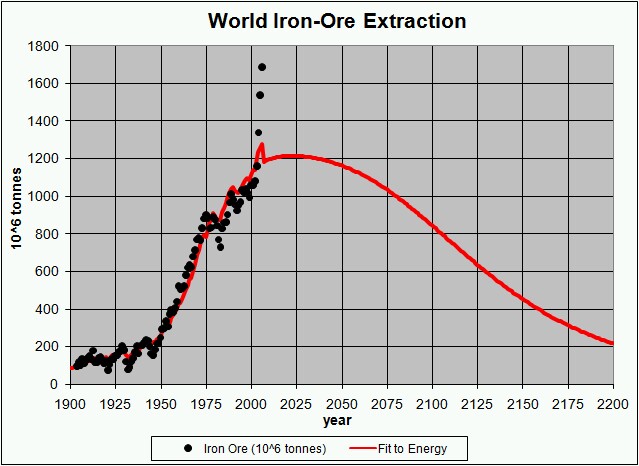
Iron Ore(106 tonnes) = 14.11 + 4.112 E. Total Extracted = 22,6688 x 106 tonnes.
Electric vehicles are making a comeback. The low-end electric vehicles use lead-acid batteries. The amount of energy that can be stored in lead-acid batteries is proportional to the amount of lead in the batteries. So, it is important to know about the availability of lead.
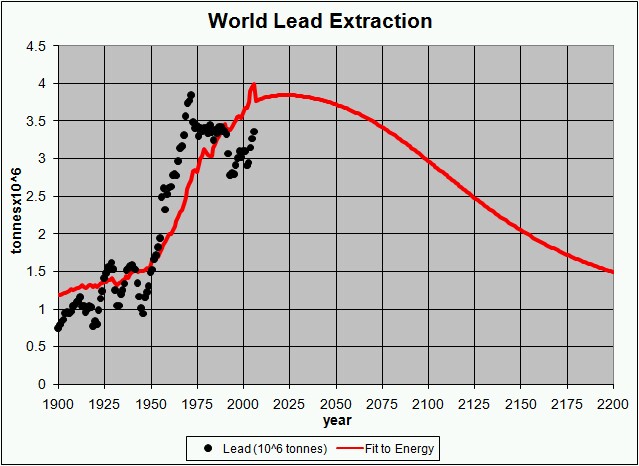
Lead(106 tonnes) = 1.024 + 0.009641 E. Total Extracted = 1,451 x 106 tonnes.
Lithium is an important metal. It is used to make modern batteries: Lithium-Ion and Lithium-Ion-Iron-Phosphate.
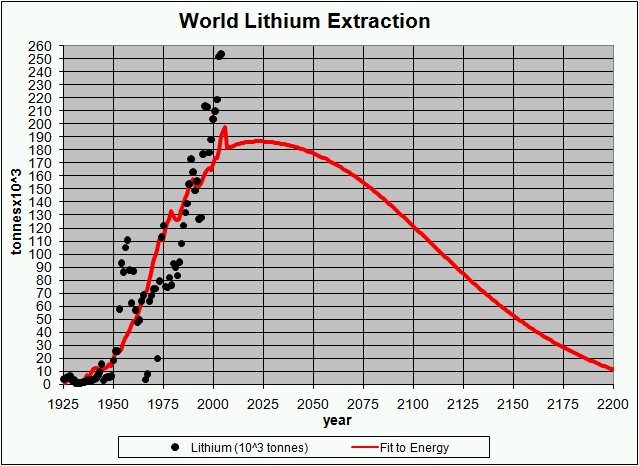
Lithium(103 tonnes) = -24.11 + 0.7206 E. Total Extracted = 28,067 x 103 tonnes.
Manganes is used to make stainless steel and aluminum alloys.
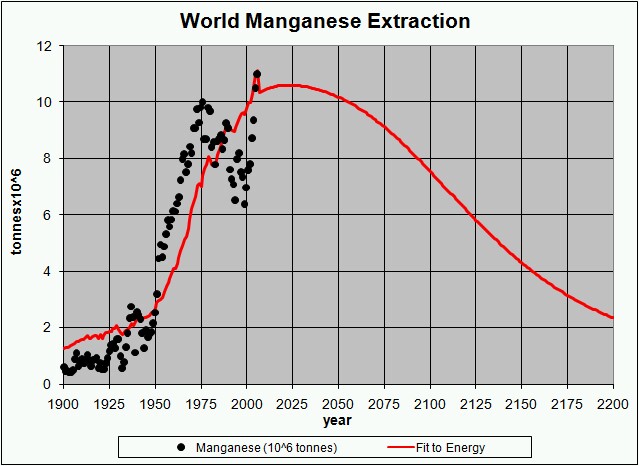
Manganese(106 tonnes) = 0.6959 + 0.033911 E. Total Extracted = 2364 x 106 tonnes.
Molybdenum is used to make high-strength steel alloys.
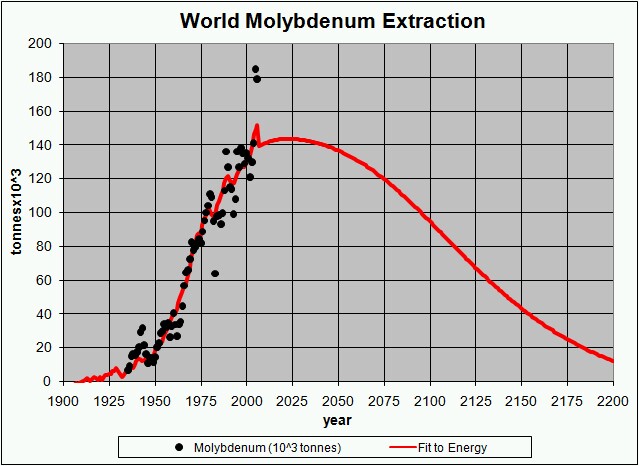
Molybdenum(103 tonnes) = 0.3511 + 0.7787 E. Total Extracted = 16,687 x 103 tonnes.
Nickel is an important metal. It is used to make modern batteries: Nickel-Cadium and Nickel-Metal-Hydride.
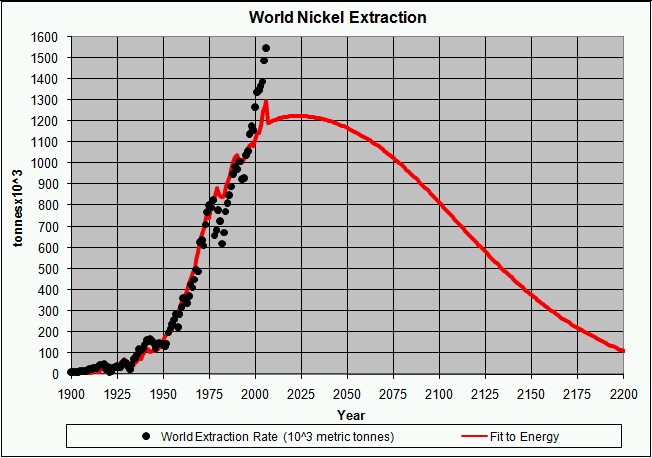
Nickel(103 tonnes) = -115.2 + 4.587 E. Total Extracted = 146,368 x 103 tonnes.
Phosphate rock is indispensible in creating fertilizer for modern farming. It is also used in modern batteries.
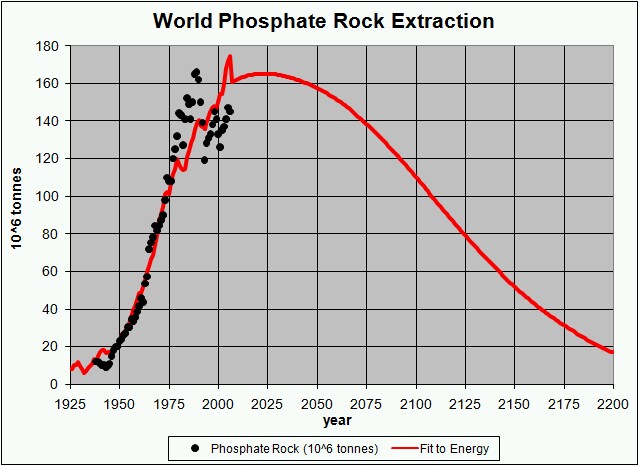
Phosphate Rock(106 tonnes) = -12.96 + 0.6098 E. Total Extracted = 21324 x 106 tonnes.
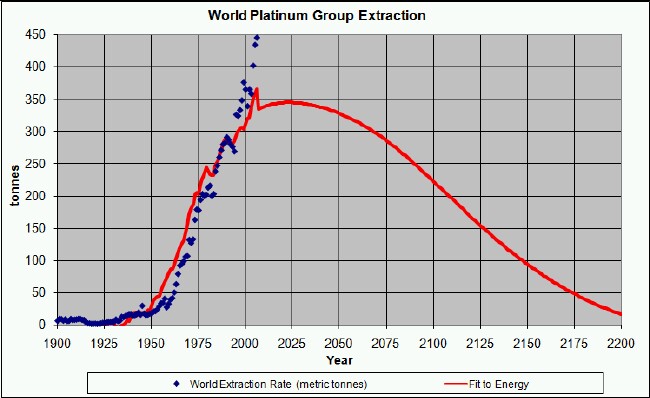
Platinum & Palladium(tonnes) = -49.12 + 1.348 E. Total Extracted = 31,074 tonnes.
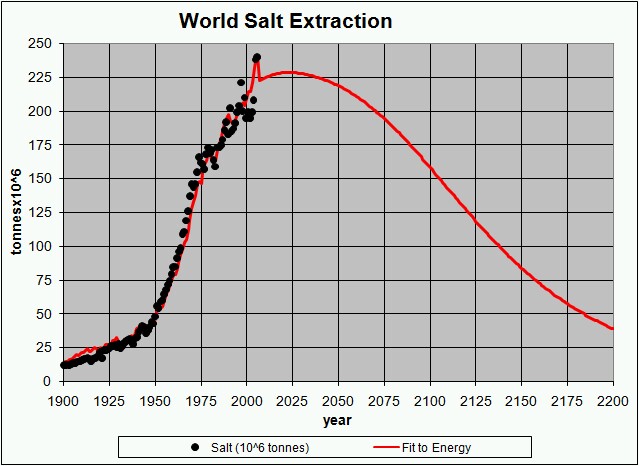
Salt(106 tonnes) = 0.3511 + 0.7787 E. Total Extracted = 40,986 x 106 tonnes.
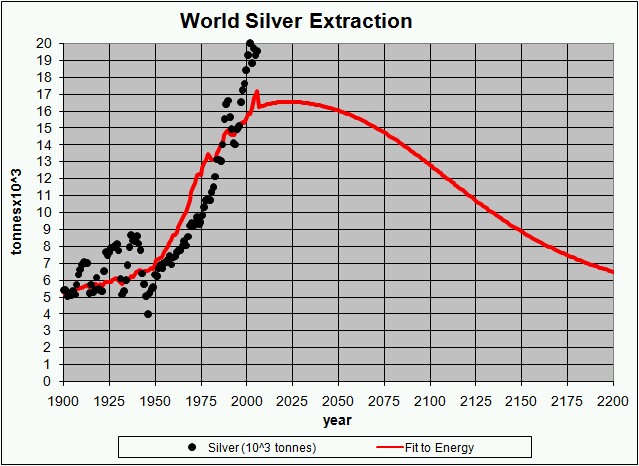
Silver(103 tonnes) = 4.454 + 0.04130 E. Total Extracted = 6283 x 103 tonnes.
Tin is used with copper to make bronz.
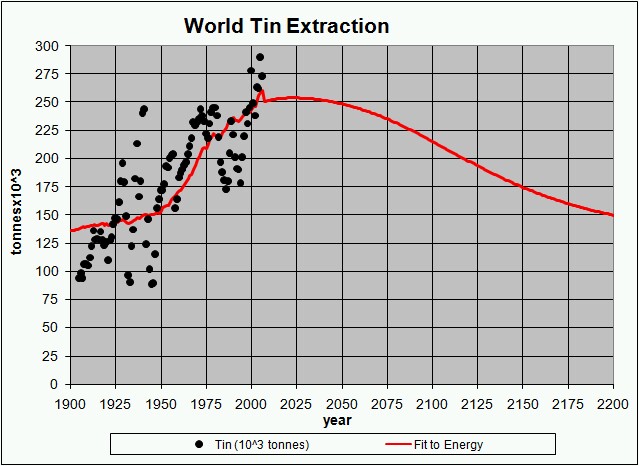
Tin(103 tonnes) = 129.3 + 0.4267 E. Total Extracted = 163,949 x 103 tonnes.
Tungsten is used to make high-strength steel alloys.
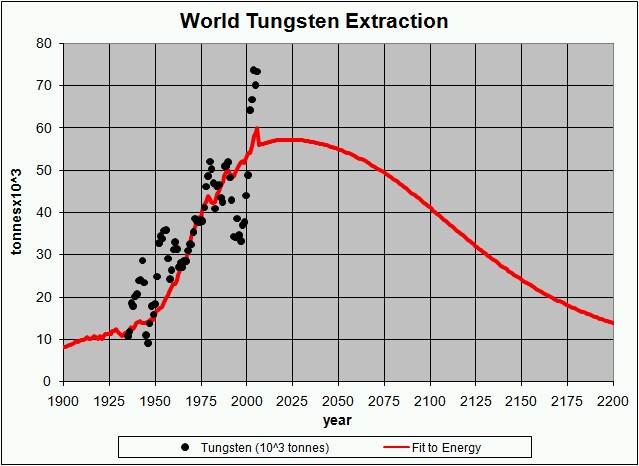
Tungsten(103 tonnes) = 5.044 + 0.1785 E. Total Extracted = 13,651 x 103 tonnes.
Zinc is used with copper to make brass.
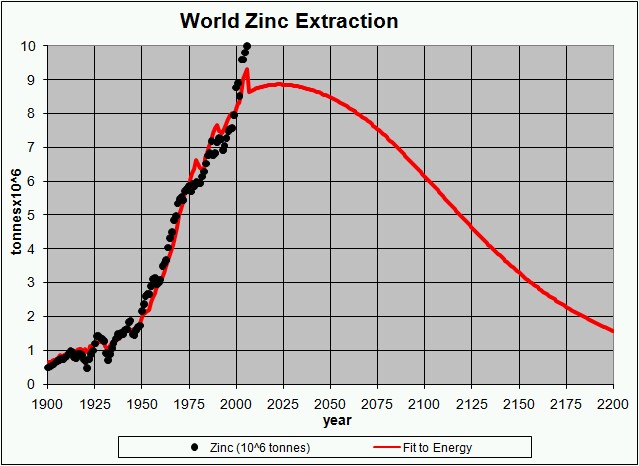
Zinc(106 tonnes) = 0.1177 + 0.02992 E. Total Extracted = 1,662 x 106 tonnes.
Mercury is the best example of a mineral that has already depleted without being effected by fossil-fuels depletion:
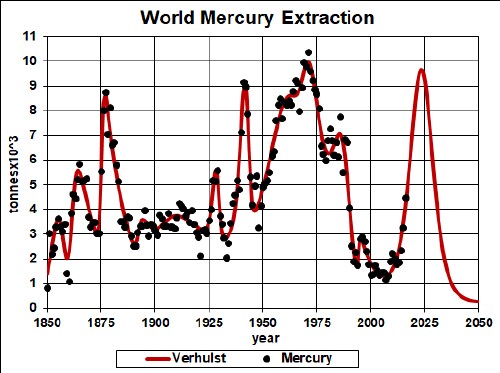
Total Extracted = 853 x 103 tonnes.
Fitting mercury data to available fossil-fuels energy yields:
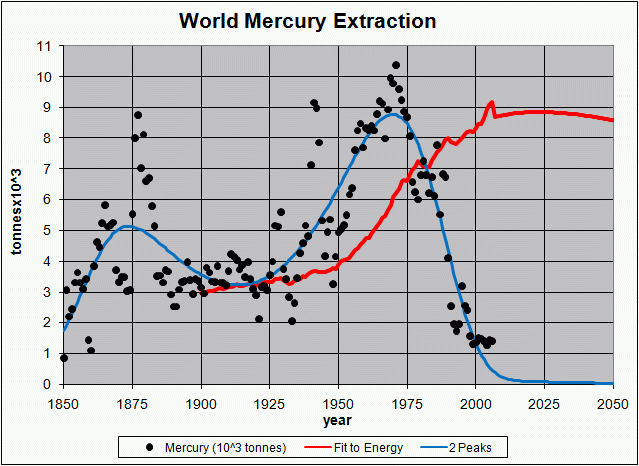
This shows clearly that mercury has depleted long before it would deplete due to lack of energy to mine it.
Click here to see some graphs showing the amount of various available minerals per capita, assuming that population decline and minerals depletion are all proportional to available fossil-fuels energy.